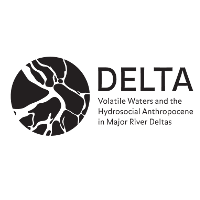The Ganges and the Nile belong to the great rivers of the world. Long before they feed two of the most spectacular and famous river deltas, their courses descent steep rapids and cataracts, for which hydropower enthusiasts and development champions have a keen interest: gushing water can be translated into electricity, and electricity translates into one of the main currencies of development. In the early 21st century, a new gargantuan dam has been built on the Nile as it flows through Sudan, and a series of other dam projects on the Ganges in the Indian Himalayas have been abandoned.
Franz recently had the opportunity to review Georgina Drew’s River dialogues: Hindu faith and the political ecology of dams on the sacred Ganga (2017) – review here – and Valerie Hänsch’s Vertreibung und Widerstand im sudanesischen Niltal: Ein Staudammprojekt und der Versuch zu bleiben (2019) – review here. Both ethnographies detail the uncertainties and strategies of the riverbank inhabitants in the (planned) sacrificial zones: Hänsch focuses on the period when the reservoir was filling up, and the large majority of the affected population was recurrently displaced along the edges of the growing reservoir, as they refused to move to official resettlement villages, where they would be totally dependent on a state administration that they had learned to mistrust. Drew considers especially the role of Hindu faith in the articulations of resistance to the damming of a holy river, particularly among women, and the changing political tides from damming enthusiasm to conservation regulations, both of which ignore these women and their agency and interests.
These large dam ethnographies bear witness to the fact that large-scale infrastructural development projects with disastrous consequences for affected populations are not a thing of the past, of a series of misguided 20th century phantasies. As geographer Bill Adams, author of Wasting the rain: rivers, people and planning in Africa (1992), recently noted in a blog post, current dam constructions are just as problematic as they were 30 years ago when he wrote the book: “Too many dams are still being conceived and planned without adequate consideration of issues such as long-term impacts on resettled and downstream communities, reservoir methane, or the long-term sustainability of growth-based economic development models.”
He observes that the logic of development, as large-scale interventions to affect large-scale change, requiring large-scale sacrifices from affected people but promising large-scale economic and other gains (often with large-scale failures and unintended, negative consequences), continues unabated, and large dams are the perfect tool to achieve it. In Bill Adams’s words:
The problem today, as in the 1980s, is that dams epitomise ‘development from above’. They emerge from a technical development planning complex that sits outside the societies that they chiefly affect. They are designed in terms of national or international development needs, not the needs of floodplain people. They are conceived of as a way to increase the size of the national economy, and to bring the maximum number of people within that economy out of poverty. Questions of the distribution of the economic pie are treated as secondary. […] Too often, riverine societies are therefore treated as eggs that have to be broken to make the omelette of development.
The blog post notes that just as these problems are not new, propositions to minimize negative effects of development projects, especially concerning rivers and the inhabitants of their banks, have long been made, too. Bill Adams foregrounds the World Commission on Dams’ report Dams and development: A new framework for decision-making (2000) as a good example to guide the planning of large-scale water infrastructures. In his own words, he takes this even further, arguing that
we need an approach to dams that makes those affected into the main beneficiaries: not bought off, moved and forgotten, but treated as the key stakeholders. We need to treat floodplains as the heart of future development, not raw material to be consumed to feed endless economic growth elsewhere. We need joined-up thinking about rivers and their waters, not narrow attempts to find sites to build dams. We need a river industry, not a dams industry, willing to consider rivers from an interdisciplinary perspective, and capable of holistic planning. We also need an approach to development that does not assume that water is being ‘wasted’ unless a river is dammed. […] We need an approach that does not see development as a transitive verb, something done to people, but instead sees it as helping people bring about change themselves.
Thanks, Bill Adams, for your big-picture discussion, and thanks, Georgina Drew and Valerie Hänsch for your detailed analyses of what life along the great rivers of great development projects may look like.

